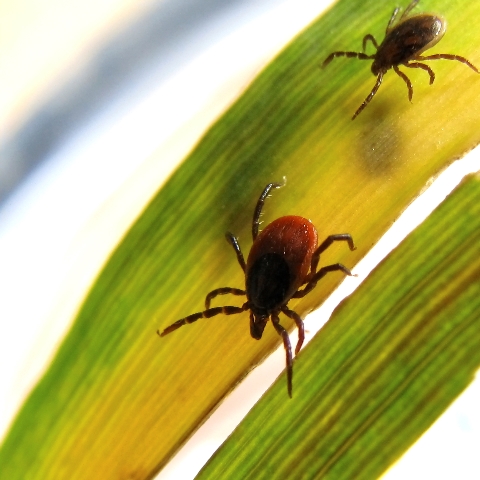You know how to avoid tick bites and how to remove a tick safely. However, you could still encounter an infection associated with the tick bite. Here are three symptoms to look for when identifying an infection caused by a tick:
- Fever/chills: Onset and severity of symptoms varies by individual
- Aches and pains: Headache, fatigue and muscular aches are common. With Lyme disease, joint pain may also occur. The severity and time of onset for these symptoms can depend on the disease type and the individual’s personal tolerance level.
- Rash: May appear 3-30 days after the initial tick bite and typically occurs before the onset of fever. Each tick has a unique rash associated with it, so it is important to note what the rash looks like, the size and location(s). Usually there is a rash at the site where the tick bite occurred and there may be additional sites immediately, later, or not at all.
With the onset of symptoms, it is important to see your physician. Take the preserved tick with you to assist the physician in identifying what type of tick you were bitten by and what appropriate treatment will entail. In some circumstances, it is necessary to send the tick to a special lab for accurate identification.
Most common treatment is antibiotics, rest and treatment of symptoms such as meds for aches and fever.
Note: Prior to 2002 there was a Lyme disease vaccine. The vaccine manufacturer discontinued making the vaccine because of low consumer demand. It is important to know that if you were vaccinated for Lyme disease, protection diminishes over time, and you could no longer protected.
Continue to enjoy your time in the outdoors ““ just remember to take appropriate steps to protect yourself against ticks.

